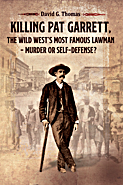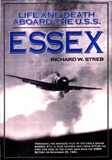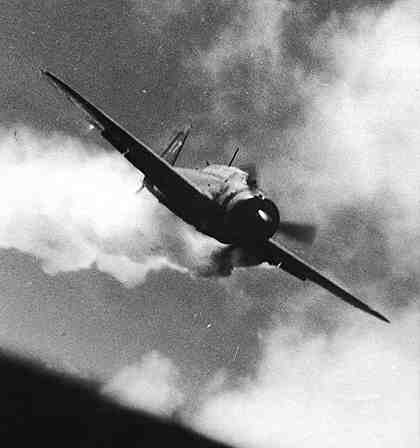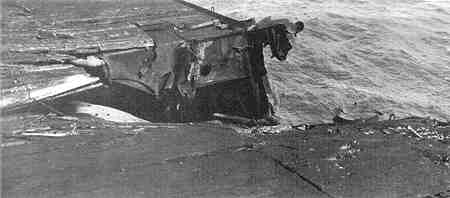|
|
||||||||||||||||||||||||
 |
||||||||||||||||||||||||
|
|
||||||||||||||||||||||||
|
||||||||||||||||||||||||
|
|
||||||||||||||||||||||||
 |
||||||||||||||||||||||||
 |
||||||||||||||||||||||||
 |
||||||||||||||||||||||||
|
|
||||||||||||||||||||||||
|
|||||||||||||||||||||||||||||
|
Life and Death Aboard the USS Essex |
|||||||||||||||||||||||||||||
|
Book Review by Gerald W. Thomas, VT-4 |
|||||||||||||||||||||||||||||
|
Of special interest to those of us who served on the Essex is Streb´s research on the Kamikaze attack on November 25, 1944. This provides a good addition to the chapter entitled "Essex Takes a Kamikaze" in my Torpedo Squadron Four: A Cockpit View of World War II.
The Kamikaze pilot´s name was Yoshinori Yamaguchi from the Yoshino Special Attack Corps stationed at Malabacat Field in the Philippines. He was flying a "Judy," number 17. Streb states, "The plane was not carrying a bomb. Is it possible that Yamaguchi was not scheduled to crash dive on that flight or on that day? Was it an excess of zeal or patriotism that set his crash course? Did he see all the planes loaded with ammunition and bombs ready for takeoff and realize that it was the perfect target?"
One chapter deals with the military history of navy policy towards Blacks from 1893 through World War II. Blacks had different pay scales and were restricted to messman/stewards mate work. "The biographies of the men killed, White and Black, comes close to representing a cross section of America in 1941. Eight were from rural areas, four from small towns and four from urban areas." Life and Death Aboard the USS Essex is published by Dorrance Publishing Co., Inc, Pittsburgh, Pennsylvania 15222. |
|||||||||||||||||||||||||||||
|
Air Group 4 - "Casablanca to Tokyo" |
|||||||||||||||||||||||||||||
|
|
|||||||||||||||||||||||||||||





